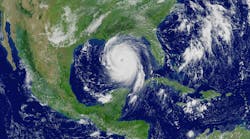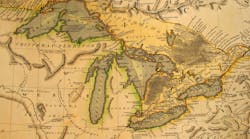Chevron deference doctrine background
There are many situations where legislative language crafted by Congress does not clarify how it is to be applied or enforced. While the Clean Water Act provides a regulatory and enforcement framework, the specific actions and requirements are not spelled out. Due to the practical limitations of legislative language, regulatory agencies in the executive branch promulgate rules that determine how legislative language will be executed. Because these agencies have significant expertise in a highly technical area, courts have, since a 1984 U.S. Supreme Court decision in Chevron U.S.A., Inc. v. Natural Resources Defense Council, largely deferred to an agency’s interpreta- tion of a law. In Chevron, the Supreme Court of the U.S. (SCOTUS) determined that if Congress has not directly spoken to the precise question at issue, a court will generally defer to an agency’s permissible construction of the statute. Since Chevron, courts have asked two questions when deciding whether an agency’s interpretation of a statute is valid:
- Did Congress speak clearly on the legal question at issue?
- If not, is the regulatory agency’s interpretation of the legislation permissible and reasonable?
If the answer to the first question is “no” and the second question is “yes,” then the regulatory agency should receive deference on making and applying this interpretation – this is the basis of the “Chevron Two-Step” doctrine.
Why is it important to understand Chevron now and what may change?
At the time of the ruling, SCOTUS did not consider this to be a landmark case, but it has become the most cited case in administrative law that now is used in other areas of legal practice including labor, tax and immigration. During the Fall 2023 term, SCOTUS will consider the case of Loper Bright Enterprises v. Raimondo, which involves the regulation of fisheries. This case places Chevron squarely at issuing, asking: “Whether the Court should overrule Chevron or at least clarify that statutory silence concerning controversial powers expressly but narrowly granted elsewhere in the statute does not constitute an ambiguity requiring deference to the agency.”
Overturning Chevron could have major implications for the role of regulatory agencies. In the event of a complete reversal, courts may no longer defer to a regulatory agency’s interpretation of a law, leading each court to reach its own conclusion as to the meaning of complex, technical laws. In such a situation, there may be significant regulatory uncertainty and inconsistency across the country. Over the last few years, SCOTUS has signaled a willingness to limit courts’ deference to an agency’s interpretation of a law where the law is silent or ambiguous. If Chevron deference is modified in the current term, it may be a slight restriction or a major overhaul. SCOTUS may also use this opportunity to signal to Congress that legislative action is needed to clarify the conditions upon which regulatory authority is granted or limited among other clarifying determinations.
Stormwater sector impacts
Some groups anticipate increasing legal confusion if Chevron deference is eliminated or restricted, as the more than 800 Federal courts may make rulings without deference to agencies resulting in rulings that may be inconsistent. In a world where Chevron deference is weakened, determinations of Waters
of the U.S. (WOTUS) may be overturned more easily by courts, resulting in inconsistent interpretations
of what is a jurisdictional water under the Clean Water Act. For stormwater managers, this can significantly affect determinations of whether a dredge and fill permit are required for construction and maintenance activities in flood control channels and whether discharge permits are needed for storm drainage systems in arid areas. If we are to have influence on how we are to do our job of restoring, preserving and protecting the nation’s waters, we need to remain vigilant in tracking these issues over the years which they develop.






